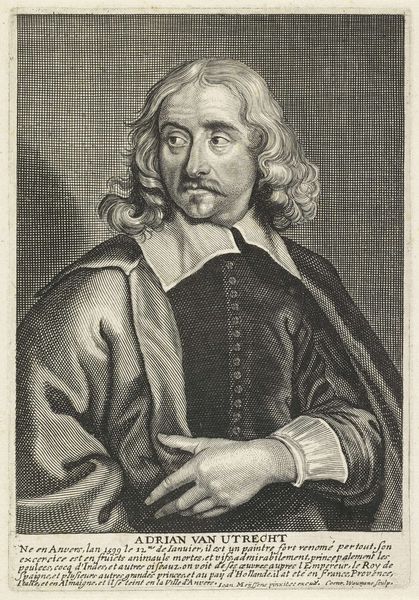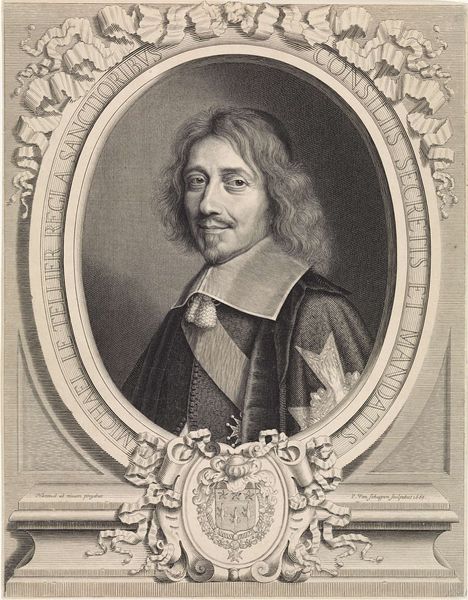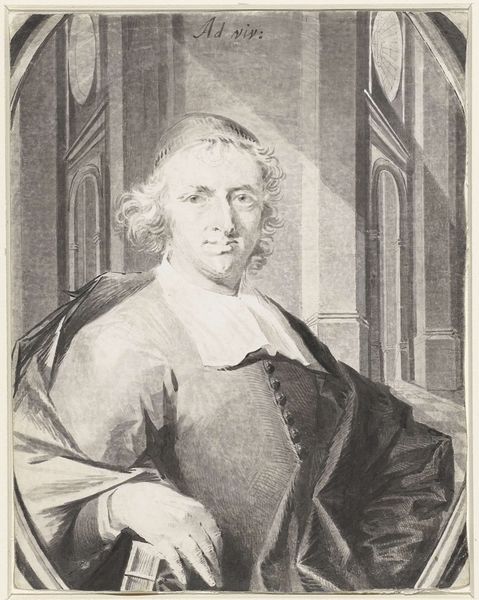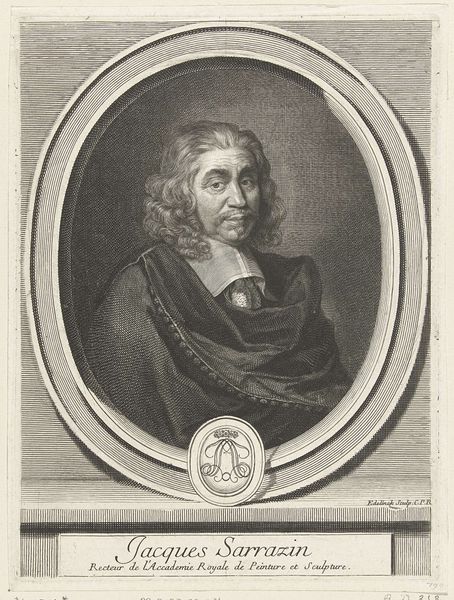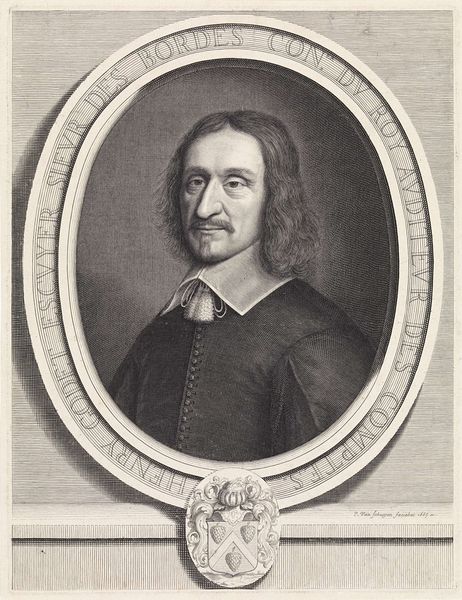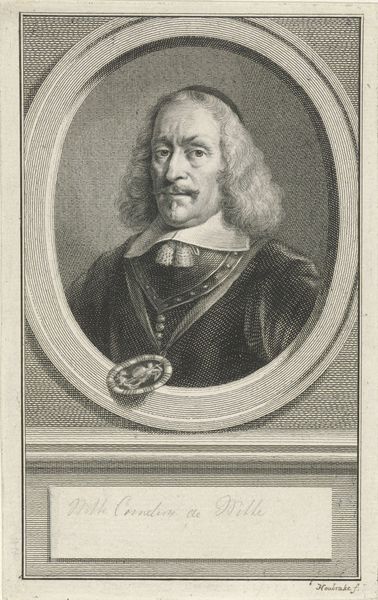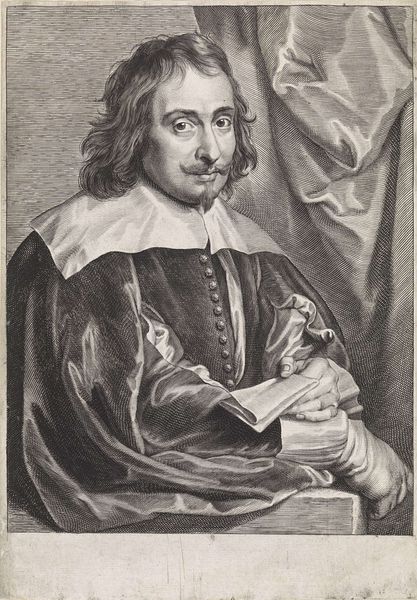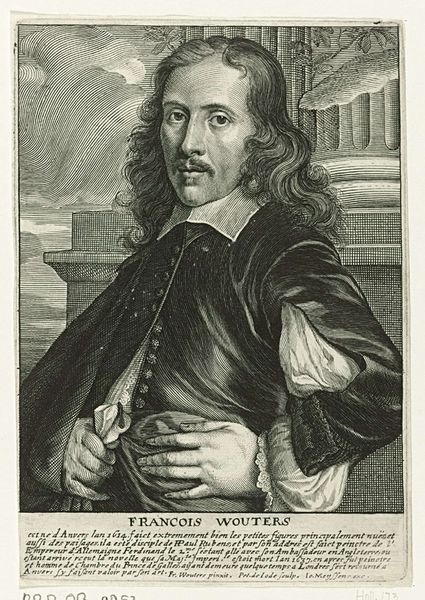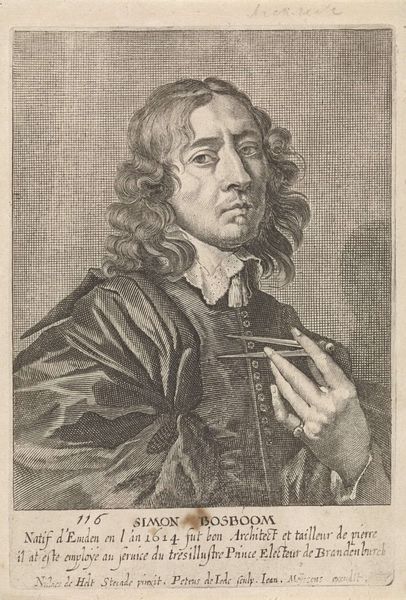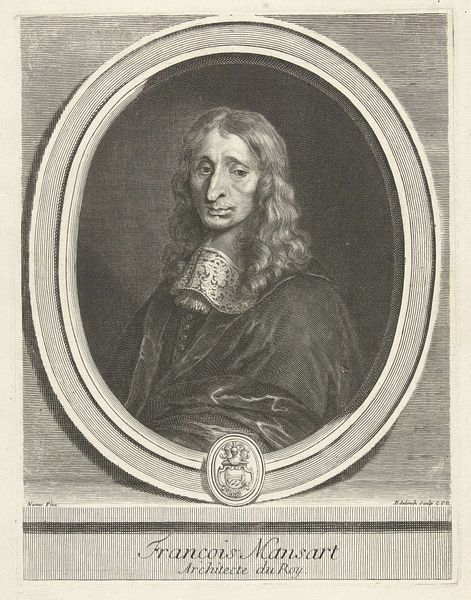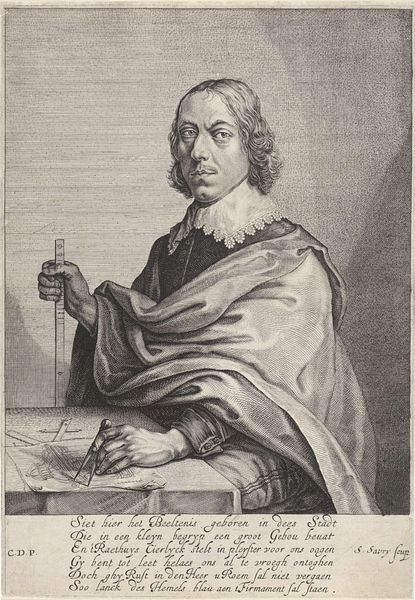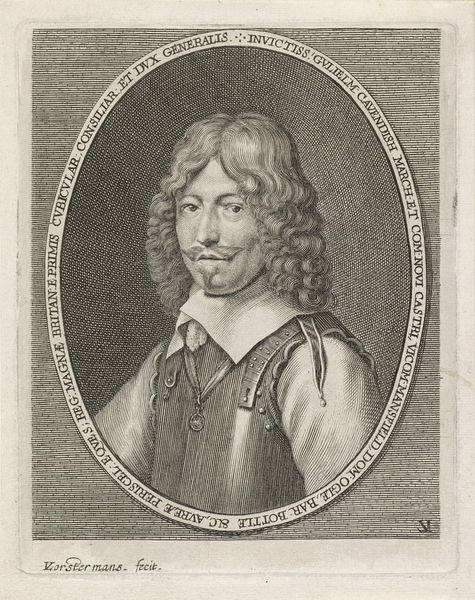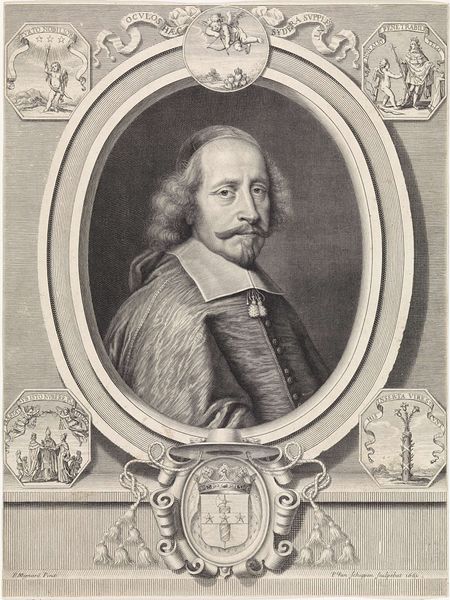
drawing, print, etching, intaglio, paper
#
portrait
#
drawing
#
baroque
# print
#
etching
#
intaglio
#
caricature
#
paper
#
portrait drawing
Dimensions: 239 × 170 mm (plate); 362 × 275 mm (sheet)
Copyright: Public Domain
Editor: Here we have "Robert van Voerst," a print dating back to the 1630s, rendered in etching and intaglio on paper. I find the subject's gaze really striking; it’s as though he's caught between confidence and a certain world-weariness. What do you see in this piece that helps contextualize it? Curator: It’s a powerful image. Van Voerst, as an engraver in London, existed within a specific political and social context. Printmaking during this era was integral not only for artistic expression but for disseminating information and solidifying power. Notice how van Dyck, who "drew" the portrait as the inscription indicates, presents van Voerst. Editor: I see. He’s holding a rolled paper; a symbol of knowledge and possibly his profession? Curator: Precisely. And what does that gaze, his clothing, suggest to you about the subject’s positioning within society? Consider class, access to knowledge, the role of the artist during the Baroque era. This wasn't just a portrait; it was a statement of identity and perhaps, a carefully constructed brand. Editor: It speaks of status, certainly. The detailed rendering of his clothes suggests wealth, or at least the appearance of it. But how does it challenge or reinforce societal norms, considering van Voerst’s profession as a printmaker? Curator: Think about the accessibility of prints versus unique paintings. Printmakers, like van Voerst, played a crucial role in making art more democratic, even while participating in a system often supported by the elite. How might his self-presentation in this portrait challenge, or perhaps negotiate, the boundaries of class and artistic identity in 17th century London? Editor: So, the act of creating multiple copies complicates the notion of singular artistic genius and perhaps offers a subtle critique of the art world's hierarchies even then? I never considered that before. Thanks! Curator: Exactly! Seeing art as deeply embedded within its time allows us to unpack complex layers of meaning. I find this makes the image very pertinent to current conversations about artistic integrity, authenticity, and power.
Comments
No comments
Be the first to comment and join the conversation on the ultimate creative platform.
